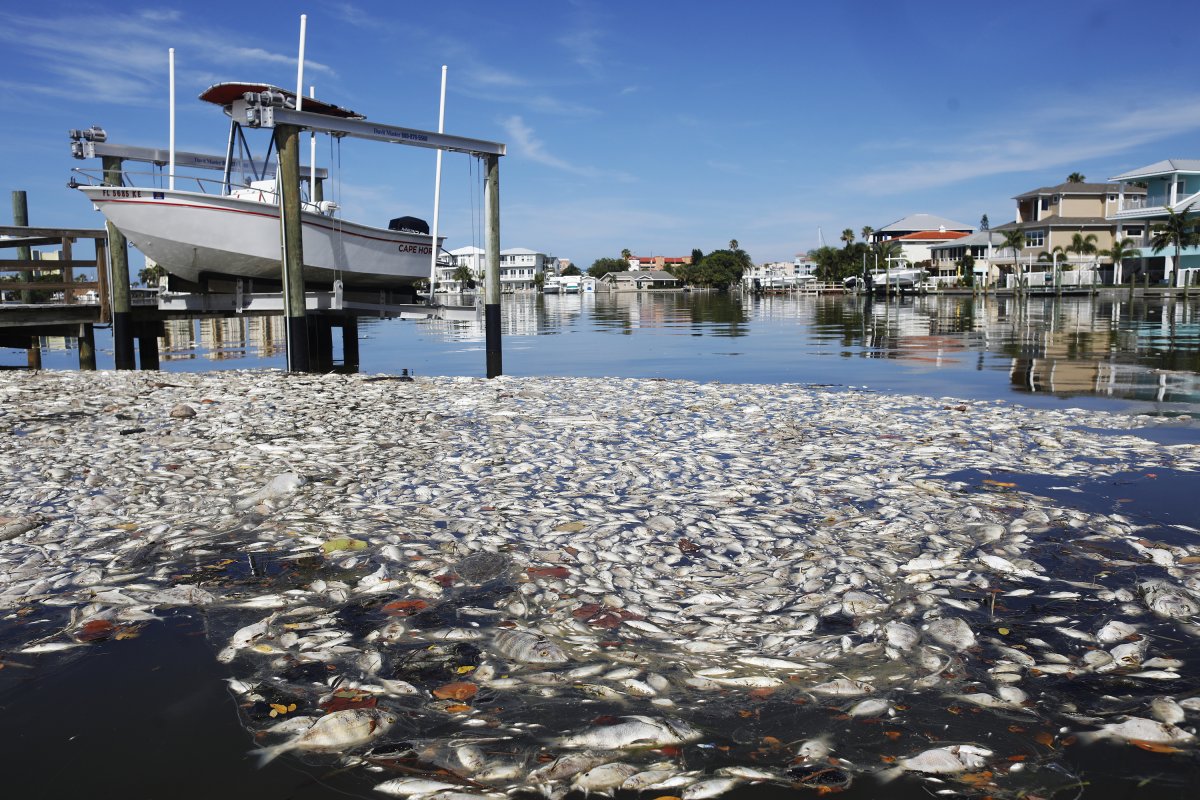Florida’s toxic red tide has caused losses of billions of dollars in just one year, due to a lack of tourists.
The state’s economy is estimated to have lost $2.7 billion due to the red tide blooms that occurred in 2018, a new study from the University of Central Florida’s Rosen College of Hospitality Management published in the Journal of Environmental Management found.
The red tide event of 2018 was unprecedented. It was one of the most severe and prolonged blooms the state has ever seen. It began in 2017 and peaked in the fall of 2018, NOAA reports. It eventually disappeared in 2019, but the impacts continued to harm the state due to the economic losses, which were mainly down to a lack of tourism.
JESUS OLARTE / Contributor
The findings of this new study stress the need for greater consideration of the damage the red tide can cause. Although officials already know that the algal blooms can be detrimental to tourism, these billion-dollar losses are substantial. A summary of the findings say these harmful algae blooms need to be considered as “potential billion-dollar disasters.”
The study reports that the losses were mainly seen in southwest and southeast Florida, which each saw losses of $1.27 billion and $1.35 billion due to this red tide. Data from the Florida Department of Revenue and the Florida Fish and Wildlife Conservation Commission was analyzed to reach these findings.
“The magnitude of losses from red tide show how important it is for the Federal and State governments to allocate appropriate resources for response and recovery to harmful algae blooms in our coastal communities,” Sergio Alvarez, the study’s lead author and an assistant professor at Rosen College, said in the summary of the findings.
“In addition, coastal tourism businesses should consider harmful algae as a very real risk to the economic sustainability of their operations,” he said. “It is essential that we find appropriate risk management tools for individuals, businesses, and communities that may suffer the economic impacts of harmful algae blooms.”

Octavio Jones / Stringer/Getty
Red tides are algal blooms from dinoflagellate algae species Karenia brevis. High levels of the blooms can cause rust-red colored layer across the surface of the water. The algae produces a neurotoxin called brevetoxin, which can be fatal to marine species.
In humans, these brevetoxins can cause uncomfortable and sometimes severe symptoms, such as eye and respiratory irritation and rashes. For this reason, swimming in waters with red tide is near impossible, meaning the sunshine state’s beloved beaches see a lot less visitors when it blooms.
Red tides can occur when there is an excess of nutrients in the water. This can provide the tides with nitrogen and phosphorus, which both aid their growth.
There is no doubt that red tides have been increasing in recent years, which presents more risk of economic losses. Climate change may be contributing to their increased frequency. This is because warmer ocean temperatures can aid algal growth. An increased amount of rainfall and storms can also contribute to their bloom, as this makes it easier for fertilizers and nutrients to flow into waterways.
Do you have a tip on a science story that Newsweek should be covering? Do you have a question about red tides? Let us know via [email protected].
Uncommon Knowledge
Newsweek is committed to challenging conventional wisdom and finding connections in the search for common ground.
Newsweek is committed to challenging conventional wisdom and finding connections in the search for common ground.


